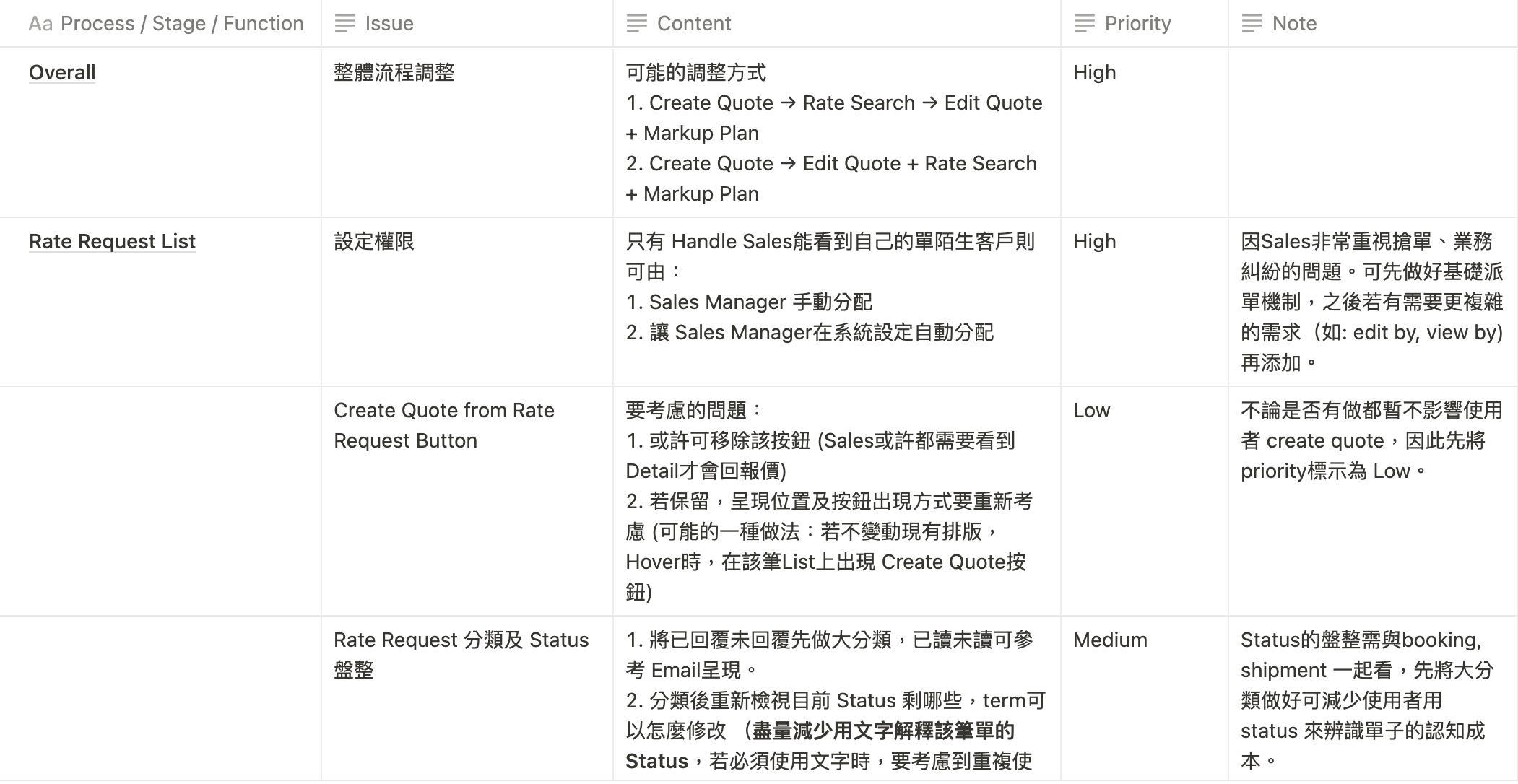Quick Quote
Modernizing quotation workflow for freight forwarders, reducing 80% of repetitive work for freight forwarders.
My Role Product Designer
Company SmartBee Intelligence
Time May - July 2022
My Task Usability Testing, UI Design, Customer Feedback Analysis
Team 2 PMs and 2 Engineers
SmartBee Intelligence is a software company that builds cloud-based solutions to digitalize global freight forwarding, an industry that arranges international shipping for business customers. Quick Quote solution redefined freight forwarders’ quotation workflow, finding an effective way to generate quotes and sync customer requirements.
Problem Statement
Traditionally, the quotation workflow for freight forwarders involves numerous manual data entry processes. They rely on Excel and email to create and send quotes. Once a quote is accepted by customers, they input customer information and requirements into their internal system for future management. This leads to a significant amount of repetitive data entry and increases the risk of errors.
Outcome
80% of data entry work was reduced.
Attained 5+ freight forwarders’ interests and secured a new contract.
Completed design 2 weeks prior to its expected completion date.
Research Pain Points
Usability Testing
Before I joined the team, our company already made a quotation tool called “Smart Quote”. However, it did not perform as expected. I was assigned to conduct usability testing to find out the issues.
Insight
Freight forwarder customers typically request a simple quote consisting of a few lines of text to obtain an initial understanding of the shipping price. If they show further interest in the offer, they may then request a complete quote in order to proceed with placing an order. However, the current solution only allows freight forwarders to generate complete quotes, lacking the capability to provide the desired simple quotes.
Customers of freight forwarders are reluctant to submit quote requests through our online platform, favoring traditional communication methods like email or phone calls. However, our current quotation system exclusively supports online quote responses, lacking the ability to accommodate email and phone call communication preferences.
The quotation forms are overly complex.
Experience Journey Map
Prioritize UX Recommendation
To help the team decide what to work on first, I also prioritized UX issues based on usability scores.
Set the New Goals
After an internal discussion, we decided to develop a new solution with goals—
Enable freight forwarders to quote for offline requests (requests from phone calls and emails).
Provide flexibility for writing both simple and complete quotes.
After writing the quote, send quotes through multiple channels, such as Email and WeChat.
Sync quote detail into the internal system after the quote is accepted by customers.
User Flow
The Design of Simple Quote
Design V1.
In the initial design, we discussed various layouts of simple quote forms. We moved on with the form that exists on top of the quote list because we found that it is the most intuitive to freight forwarders during the customer walkthrough. This layout also enables users to check other quotes on the quote list, which is particularly helpful when their customers inquire about quotes through phone calls.
Design V2.
Enable freight forwarders to write quotes when customers do not have cargo dimensions
From the talk with customers, we also identified the need to incorporate the quote that lists the unit price, which usually remains valid for a defined period. After consulting with our user representative, I quickly draft a version in which the price is calculated on weekdays to initiate discussions with our customers.
Design V3.
1. Adapt Unit Price Calculation Based on Customer Preference
During the customer discussions, we found that the other way of calculating unit prices is more common. Unlike what we’ve discussed internally (calculating unit price by weekdays), most customers now prefer calculating unit price by weight range (e.g. below 45kg, the price would be 35 USD/kg, whereas if the weight falls between 45kg to 100kg, the price would be 32 USD/kg). I adjusted the design to align with the new calculations.
2. Reposition the Spot Quote and Unit Price Quote Switch
In the meantime, I refined the term, changing “Regular Schedule” to “Unit Price Quote” and “Specified Schedule” to “Spot Quote” to make it more resonating with users. During customer discussions, we discovered that customers often make an initial decision between utilizing a Spot Quote or a Unit Price Quote. Recognizing the unique fields and requirements associated with these two types of quotes, I repositioned the switch between these quotes to the top to improve the quoting efficiency.
Final Design
Spot Quote
Unit Price Quote
Takeaway
I appreciate the opportunity to work with the customer in enhancing the design. Throughout the process, I gained a more comprehensive understanding of the various scenarios involved in the freight forwarders’ quotation process.
If I could improve, I’d like to test designs and build documentation standards earlier to facilitate team communication.






